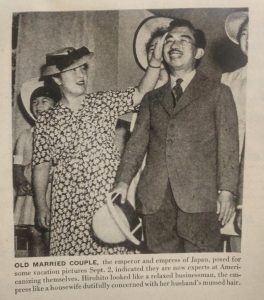Among old belt-buckles, wooden furniture, yard appliances and music records, I found gold at a yard sale — a copy of Life Magazine from Sept. 15, 1947. It’s brimming with history, a time capsule of what life was like almost 71 years ago. So begins, “Life in 1947,” a series discussing the fascinating differences between our world now and the world we left behind. This week, we’re talking about race.
Let’s put things into perspective. The Brown v. Board of Education decision, the United States Supreme Court case which ended segregation in schools, was not given until 1954. The Civil Rights Act, banning racial discrimination and segregation nation-wide, wasn’t passed until 1964, 17 years after this magazine was published.
Unsurprisingly, this magazine is starkly focused on white issues. I was hard-pressed to find coverage of persons of color, and what I did find was less than flattering.
Take this article, for example:

I discussed it briefly in last week’s installment of Life in 1947 on relationships, but it speaks a lot about race relations in the United States at the time as well.
This article features the emperor and empress of Japan, discussing their expert Americanization. The article indicates this “Americanizing” is a good thing and discusses the emperor as a relaxed businessman and the empress as a housewife.

This short article discussing the Taft-Hartley bill, which limited the actions of unions at the time, features the only picture in the magazine portraying a black person. In the picture, several women participate in an obstacle course, running over obstacles labeled as subjects such as “rent,” “food” and “husband’s beer.” Amongst a line of white women, there is one black lady racing through the course.
These two articles display much about race relations in the United States during 1947. First, the short snippet about the Japanese emperor and empress displays the belief that other countries need to be Americanized in order to be acceptable.
Second, the fact that the picture concerning the Taft-Hartley bill is the only one featuring a black person says more than the picture itself. The magazine is shockingly white, portraying white faces working, eating and smoking, but there is a single picture of a black person.
The lack of representation for people of color in this magazine is shocking, in part because a lack of representation in the media is still a prevalent issue today. After 71 years, people of color are still drastically underrepresented in publications, books, films and other media.
Overall, this magazine serves as a reminder of how, not too long ago, people of color were given equal rights. It was only 54 years ago that our country finalized desegregation. We’ve come a long way, but we still have so far to go.

